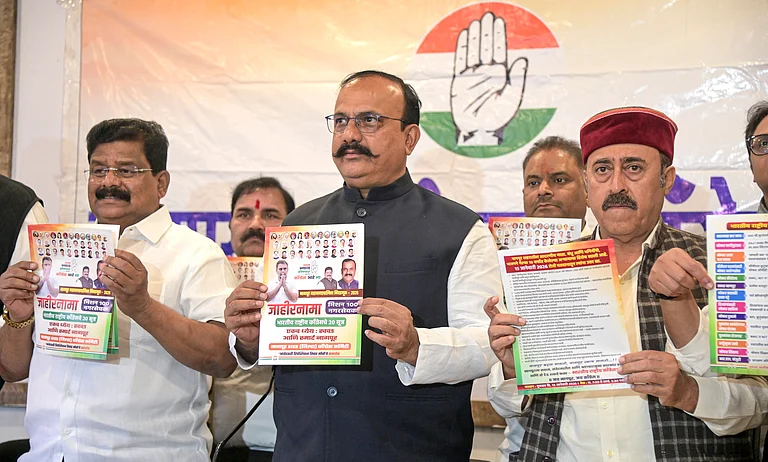For the past two weeks, internet forums have been abuzz with discussions at the intersection of art, commercialisation, ethics, and the law.
The reason is the case that the popular storytelling platform 'Humans of Bombay' (HoB) has filed against another such platform 'People of India' (PoI).
The HoB has claimed in the Delhi High Court that PoI has copied the content created by the HoB to create an "imitative platform".
While much of the discussions have been based on the ethical or the commercialisation of art, the case is a legal matter subject to copyright laws and an allegation of a rival platform copying content from an older and a bigger platform.
Here we explain the case of the HoB against PoI, what the evidence says, what the law says, and what the judge has so far said on the subject.
What are Humans of Bombay and People of India?
The Humans of Bombay (HoB) has sued the People of India (PoI) for copyright infringement.
The HoB and the PoI are both storytelling platforms that share stories of people and places. These stories are sometimes textual and are sometimes in the form of audio and visual formats, such as videos on YouTube or Reels on Instagram and Facebook.
The HoB is one of the several 'Humans of' platforms that have emerged after the 'Humans of New York' (HoNY) platform launched by Brandon Stanton in 2010. Not very long after being launched, HoNY became very popular for sharing human-centric stories from New York. The initiative led to several 'Humans of' platforms coming up across the world. Even college and university campuses started making 'Humans of' pages on Facebook where they would share stories from campuses.
In 2014, Karishma Mehta started HoB as a Facebook page that became hugely popular and has evolved into a multi-platform storytelling platform since, spread across all the major social media platforms. Later, PoI was launched, which is along the same lines as HoB and HoNY and others.
As of September, the HoB has 1.4 million Facebook followers and 2.4 million Instagram followers. The PoI has 1.6 million followers.
What's the Humans of India vs People of India case?
While much of the discussions have been focussed on the ethics or the commercialisation of art, the case is related to alleged copyright infringement.
The Humans of Bombay (HoB) has filed in the Delhi High Court that the People of India (PoI) has copied its content in multiple ways. Based on the allegation, the HoB has sought an injunction against PoI.
The HoB has argued that the PoI has on several occasions interviewed the same persons as HoB and uploaded their photos and photos in an identical manner.
The HoB has argued that the PoI has created an "imitative platform" by copying its content.
The HoB has argued that the PoI has "started an identical portal/service having identical content" and "have replicated a large number of images and videos" from the HoB, according to court filings accessed by Outlook. In their lawsuit, the HoB has further said that the PoI has "completely replicated" their business model and also stories.
"In addition, he [the Humans of Bombay] submits that the Defendants [People of India] are approaching the very same subjects who are shown on the Plaintiff’s websites in order to create an imitative platform," says the lawsuit.
In the lawsuit, the HoB has shared a table showing their original posts on one side and PoB's posts on the other side. The PoB's posts are nearly-identical in all cases. In some cases, only the caption appears to be different and the photos appear to be completely the same.
While the social media discussions have turned the HoB versus PoI as a David versus Goliath case where one privileged elite is taking on another emerging player, the case in the court is one purely related to alleged copyright infringement. It is not about eroding competition.
Even HoNY Founder Brandon Stanton appears to have missed the point when he lashed out at HoB in a social media post. He wrote, "I've stayed quiet on the appropriation of my work because I think Humans Of Bombay shares important stories, even if they've monetized far past anything I'd feel comfortable doing on HONY. But you can't be suing people for what I've forgiven you for."
What does the law say?
The case is governed by the Copyright Act, 1957. The law is part of the broader intellectual property rights (IPR) regime that protects and governs original creations.
The copyright includes photographs, videos, speeches, books, written articles, spoken word, etc.
A creator of content is considered to be the copyright-holder and any unauthorised usage is considered to be a violation, which can be punished as per the law.
There are exceptions to the copyright violations, such as if the content is being used while reviewing it (such as a film or a book review) or being used as a citation in a book or an article (with attribution and acknowledgement).
An injunction or damages may be sought if one party feels they have been violated. The law states that a person guilty of copyright infringement could be jailed for up to one year, fined, or both.
One element of the Humans of Bombay (HoB) versus People of India (PoI) case is that it has been argued that the PoI is trying to 'pass off' itself as the original creator of content that HoB alleges it has copied from itself, according to The Indian Express.
The Express reported, "Besides copyright infringement, HOB’s plea said that the similarities between the infringing content and its own amounted to 'passing off and unfair competition', as POI had 'evidently, knowingly and deliberately, published content that is identical or substantially similar to the popular Content comprised of Plaintiffs Works in an attempt to ride on goodwill that has been painstakingly built by the Plaintiff', it said."
Explaining the concept, The Express said that 'passing off' means when one party deceives the general public to pretend to be someone else. It cites the case of Cadila Healthcare Limited vs. Cadila Pharmaceuticals Limited (2001) for this.
"Suppose a brand logo is misspelt in a way that’s not easy for the consumer to discern. In such cases, the infringing products need not be identical, but the similarity in the nature, character, and performance of the goods of the rival traders has to be established, as laid down by the Supreme Court in Cadila Healthcare Limited vs. Cadila Pharmaceuticals Limited (2001)," noted The Express.
What did the Delhi High Court say?
After going through the arguments presented by the Humans of Bombay (HoB) and the evidence presented in the form of a table comparing HoB's original content with the People of India's (PoI) content, the Delhi High Court has said it appears that PoI has "substantially" copied the HoB.
A review of HoB's chart shows that the PoI's content is nearly identical with just in-photo or in-video captions being different. The persons as well as photo and video angles also appear to be exactly same or near-identical.
"A perusal of the images above would show that, prima facie, there is substantial imitation and in fact, in some cases, the photographs/images are identical or imitative," said the Delhi High Court.
Following the observation, the Delhi High Court issued a notice to PoI to file its response. The next date of hearing of the case is October 11.


























